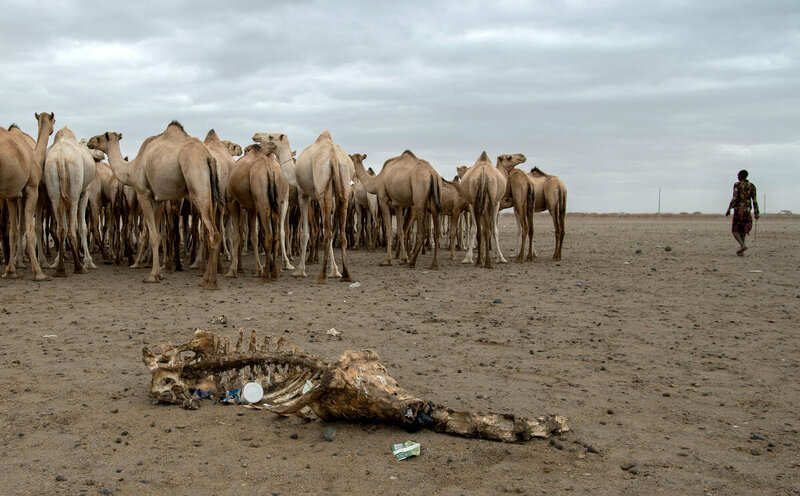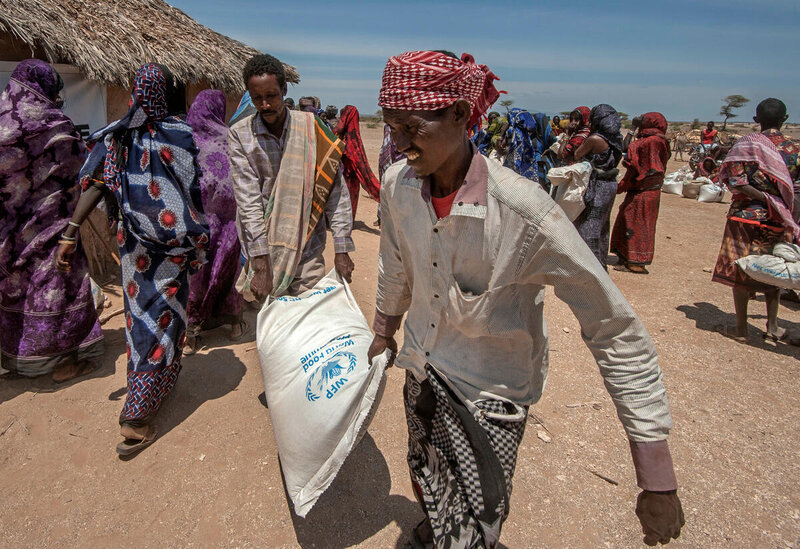Alice Ekusi recalls her childhood days in the hills of Lolupe, in the Turkana region of Northern Kenya. The reminiscence of her youth goes back to the days that she happily spent with her parents and friends. While growing up she'd never seen her parents worrying about not having enough food for their family.
"We lived off milk and meat," recalls Alice, "but with time, water and pasture started dwindling in the once productive hills and our livestock started to die," she adds.
With the livestock gone, Alice was left with no choice but to seek an alternative way of earning. She moved to Nakalalei hoping to change her fortunes mining and selling gold specs. But with many other pastoralists' dropouts doing the same, the mines produced less and less. Now, at age 60 and a failing eyesight, she is compelled to fetch and sell firewood so she can provide at least one meal a day for her three grandchildren.
"Five consecutive failed rainy seasons have decimated more than 2.5 million livestock, the main source of food and income - meaning that children, mothers and the elderly don't have milk - a critical source of nutrients for livestock keepers," says Felix Okech, WFP's Head of Relief and Refugees Operations in Kenya.
"Thanks to a timely contribution from the United States Agency for International Development (USAID), we've been able to provide food and cash support to families like Alice's who will be able to meet their immediate food needs," adds Okech.
Alice is among 10,000 families who are benefitting from a monthly cash transfer amounting to US$54 for the next six months. The cash transfers will serve as a lifeline, enabling many to buy food and other essentials as the drought continues to destroy crops and livestock.
"I bought maize and beans and with a part of the cash and I also paid for my grandchildren's school fees so that they can continue studying," says Alice. "The beans are already over. I could only afford half a bucket - beans are currently very expensive."
Alice, her three grandchildren, one goat, and a chicken will survive on a quarter bag of maize - until Alice receives the next monthly cash transfer. In the evenings, Alice prepares ugali, a dense maize porridge, so that the family can go to bed with a full stomach.
"I was selected to receive this cash because I'm an elderly person who is singlehanded taking care of young children. I don't have property or a husband to fall back onto," she adds.
In Turkana North, many people are relieved and have a sense of hope after WFP started providing emergency cash assistance to communities who have been left with barely anything after the drought.
With the next tranche of cash, Alice plans to purchase more food as well as a goat. "It is in our blood. A homestead is not complete without some goats," says the hopeful Alice.
Today, 4.4 million Kenyans are on the doorstep of hunger with 1.2 million one step away from a catastrophe.

As this humanitarian crisis continues to unfold, WFP with contributions from USAID has been supporting the most vulnerable Kenyans through the Lisha Jamii (Kiswahili for feed families) programme.
Some 535,000 people facing emergency levels of food scarcity (IPC Phase 4) across 12 counties will receive monthly food and cash support. An additional 356,400 children under the age of 5 as well as 213,000 pregnant or breastfeeding mothers will benefit from malnutrition treatment in 15 drought-affected counties.
WFP will also continue supporting the livelihoods of 370,000 Kenyans through resilience-building activities such as rainwater harvesting for irrigation, beekeeping, growing pasture, and drought-tolerant nutritious crops.

Food and nutrition assistance for drought-affected families has been made possible thanks to the generous contributions of the governments of Canada, France, Norway, the United States of America, and the United Nations Central Emergency Response Fund (UN-CERF).






